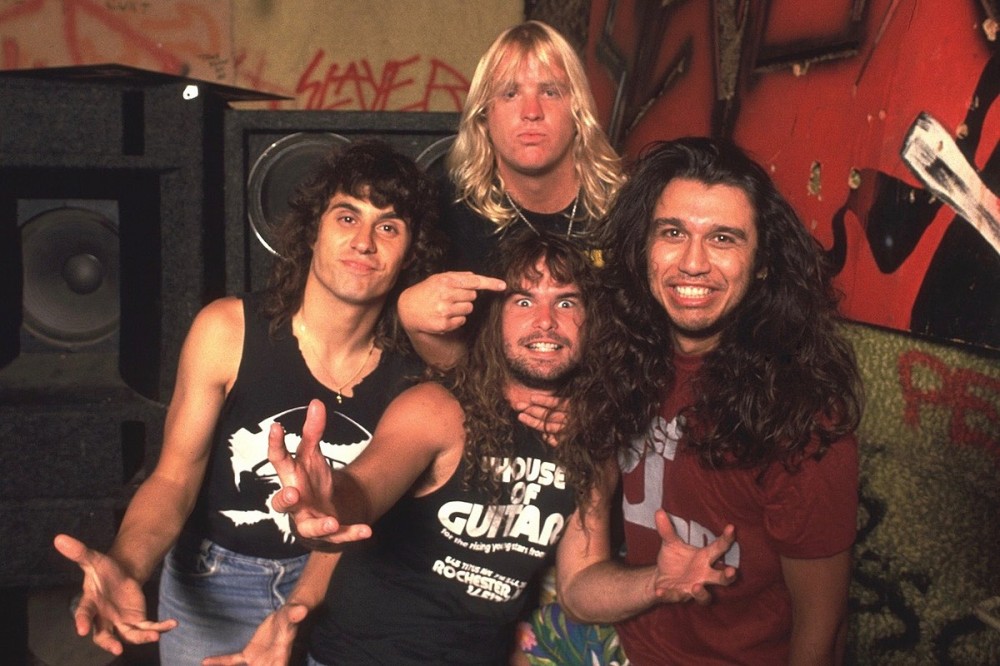
Slayer’s ‘Reign in Blood’: 10 Facts Only Superfans Would Know
With two albums out by 1985, Slayer knew they had to make a serious impact in order to be taken seriously as one of the giants. Though many of the musicians will deny it, there was an unspoken competition between the thrash metal groups of that time over who could play the fastest, most aggressive music.
Enter producer Rick Rubin from Columbia Records, who knew this band had something powerful lurking beneath the surface. Slayer came out of the sessions with Rubin with Reign in Blood — one of the shortest, but most concisely brutal works of its time.
Released Oct. 7, 1986, everyone may have been happy with the result, but no one knew for sure how large of an imprint that album would have in the history of metal, not to mention how it would influence music for decades to come. Slayer's touring career may be ending soon, but Reign in Blood will always remain one of the most powerful punches of their legacy.
Here are 10 facts only Slayer superfans would know about the legendary Reign in Blood.
1. It was released on a hip-hop label.
Rubin was the co-founder of Def Jam Recordings, which was a hip-hop label. The producer was known for his work with groups such as Run DMC and LL Cool J, which did make Slayer slightly reluctant to sign to the label, especially since they were already under contract with Metal Blade Records.
"I first met [Slayer] at their show at The Ritz in NYC,” Rubin told Metal Hammer regarding his initial impression of the band. “I knew nothing about them before the show and they blew me away.”
2. The band were unaware of its short runtime.
The band only realized the album's runtime once they were finishing up with its mixing with engineer Andy Wallace. Reign in Blood is just a few seconds short of 29 minutes, and when Tom Araya looked up and saw the number, he asked if that was the total time for all of the songs. The band weren't sure whether they would have to hit the studio to create more material or just leave it, so they turned to Rubin.
“His only reply was that it had 10 songs, verses, choruses and leads and that’s what constituted an album. He didn’t have any issue with it," Araya told Metal Hammer.
3. One-sided.
Due to the album's short length, it all fit on one side of a cassette in its entirety. "You could listen to it, flip it over, and play it again," guitarist Kerry King told Decibel Magazine. "We’d never been about putting songs and music on our records that doesn’t need to be there. Hour-long records seem to be the trend these days, but you know, you listen and it’s like, 'You could lose this part, you could cut this song completely,' and make a much more intense record, which is what we’re all about"
4. The band hated the album artwork at the time.
The album art was painted by American political artist Larry Carroll, who was only aware of the band's desire to have a goat on the cover. "Their lyrics are quite visual…..They're always quite provocative, always touching on subjects that a lot of people shy away from. They certainly don't hold back. So it was suited for the kind of work that I do," Carroll said, according to D.X. Ferris's book Slayer's Reign in Blood.
"Nobody in the band wanted that cover," Kerry King told Metal Hammer. "We were stuck with it."
5. The Columbia controversy.
Columbia was Def Jam's distributor, but they refused to distribute the album primarily because of the artwork and its opening track, "Angel of Death." The song discusses the atrocious acts of the Nazi physician Josef Mengele, who was nicknamed the "Angel of Death," during the Holocaust.